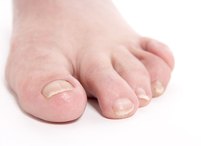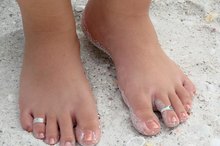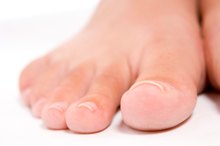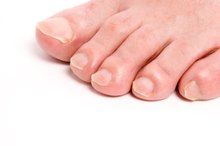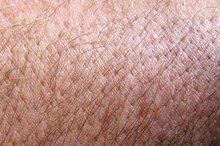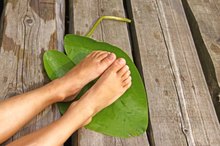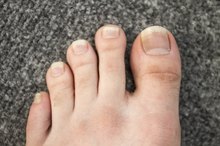What does fact checked mean?
At Healthfully, we strive to deliver objective content that is accurate and up-to-date. Our team periodically reviews articles in order to ensure content quality. The sources cited below consist of evidence from peer-reviewed journals, prominent medical organizations, academic associations, and government data.
The information contained on this site is for informational purposes only, and should not be used as a substitute for the advice of a professional health care provider. Please check with the appropriate physician regarding health questions and concerns. Although we strive to deliver accurate and up-to-date information, no guarantee to that effect is made.
Ingrown Thumbnail
Ingrown nails develop when the edges of nails grow into the surrounding skin 3. While people most often experience ingrown nails in their toes, this irritating condition can occur in any nail, including fingers and thumbs 13. While the causes for ingrown toenails and ingrown thumbnails may differ, the same course of treatment may help reduce the symptoms and prevent recurrences 2. According to MayoClinic.com, home treatments can help resolve and prevent some cases of ingrown nails, while other conditions may require medical treatment 123.
If you are experiencing serious medical symptoms, seek emergency treatment immediately.
Symptoms
The skin around an ingrown thumbnail may appear slightly red and swollen. You may notice slight discomfort or sharp pain, especially when your thumb bumps or rubs against solid objects. As the nail continues to imbed itself deeper in the soft tissue, you may notice signs of a developing infection, including the appearance of pus.
Causes
Baking Soda for Ingrown Nail
Learn More
A variety of conditions can cause your thumbnail to become ingrown. According to Dr. Thomas J. Zuber of Saginaw Cooperative Hospital, improper trimming, trauma and excessive external pressure may lead to an ingrown nail 1.
Complications
Left untreated, ingrown thumbnails can continue to build pressure against the surrounding skin, leading to additional swelling and pain, as well as infection. Increased pain, drainage and the appearance of pus often signal the presence of an infection in the surrounding tissue.
Treatments
What to Do for a Ripped-Loose Fingernail?
Learn More
MayoClinic.com notes you can soak the affected nail to relieve tenderness and reduce pain 2. Soak your ingrown thumbnail in a bowl of warm water for about 15 minutes, three times a day. Press a small piece of cotton under the edge of your ingrown nail, gently holding the nail edge away from your inflamed skin 1. Apply a topical antibiotic and a bandage to your clean skin. Consult your doctor if home treatments fail to reduce the pain and swelling. Your doctor may need to remove part of your nail or treat the infection with an antibiotic.
- MayoClinic.com notes you can soak the affected nail to relieve tenderness and reduce pain 2.
- Consult your doctor if home treatments fail to reduce the pain and swelling.
Prevention
Trim your thumbnails straight across the ends, rather than creating curved edges. Keep the length about even with the outside edge of the outer tip of your thumb. Avoid repetitive movements that create continual pressure against the edge of your thumbnail. If you experience recurrent ingrown nails your doctor may advise removing a portion of the nail or destroying part of the area from which your thumbnail grows by freezing or cauterizing a section of the nail bed 13.
- Trim your thumbnails straight across the ends, rather than creating curved edges.
- Avoid repetitive movements that create continual pressure against the edge of your thumbnail.
Related Articles
References
- Drugs.com: Ingrown Nail
- MayoClinic.com: Ingrown Toenails
- AAFP: Ingrown Nails
- Dąbrowski M, Litowińska A. Recurrence and satisfaction with sutured surgical treatment of an ingrown toenail. Ann Med Surg (Lond). 2020 Jun 26;56:152-160. doi: 10.1016/j.amsu.2020.06.029. PMID: 32637092; PMCID: PMC7330155.
- Haneke E. Controversies in the treatment of ingrown nails. Dermatol Res Pract. 2012;2012:783924. doi: 10.1155/2012/783924. PMID: 22675345; PMCID: PMC3362847.
- Miquelão Canuto Verussa MJ, Biselli Boarini LM, Gabbi T. "Super U" technique for ingrown nails: a tertiary hospital experience between 2011 and 2018. Int J Dermatol. 2019 Oct 24. doi: 10.1111/ijd.14694. Epub ahead of print. PMID: 31650538.
- Arica IE, Bostanci S, Kocyigit P, Arica DA. Clinical and sociodemographic characteristics of patients with ingrown nails. J Am Podiatr Med Assoc. 2019 May;109(3):201-206. doi: 10.7547/17-023. PMID: 31268783.
- Mayeaux EJ Jr, Carter C, Murphy TE. Ingrown toenail management. Am Fam Physician. 2019 Aug 1;100(3):158-164. PMID: 31361106.
- Sánchez LC, Zalacaín-Vicuña AJ. Onychoplasty with 1064-nm Laser: Matrixectomy for Treatment of Ingrown Toenails. J Am Podiatr Med Assoc. 2019 Sep;109(5):401-406. doi: 10.7547/17-008. PMID: 31599675.
- Muriel-Sánchez JM, Becerro-de-Bengoa-Vallejo R, Montaño-Jiménez P, Coheña-Jiménez M. The treatment of ingrown nail: Chemical matricectomy with phenol versus aesthetic reconstruction. A single blinded randomized clinical trial. J Clin Med. 2020 Mar 20;9(3):845. doi: 10.3390/jcm9030845. PMID: 32244966; PMCID: PMC7141528.
- American Academy of Family Physicians. Ingrown toenails. January 4, 2018.
Writer Bio
Laura Wallace Henderson, a professional freelance writer, began writing in 1989. Her articles appear online at Biz Mojo, Walden University and various other websites. She has served as the co-editor for "Kansas Women: Focus on Health." She continues to empower and encourage women everywhere by promoting health, career growth and business management skills.
